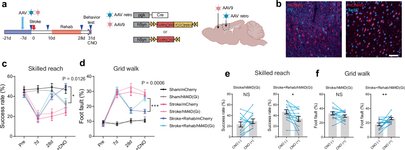First stroke rehabilitation drug that reestablishes brain connections discovered in mouse model
Varghese Johnmedicalxpress.com
First stroke rehabilitation drug that reestablishes brain connections discovered in mouse model

It reminded me of being told, ‘My husband had a bypass, and he’s already back at work.’